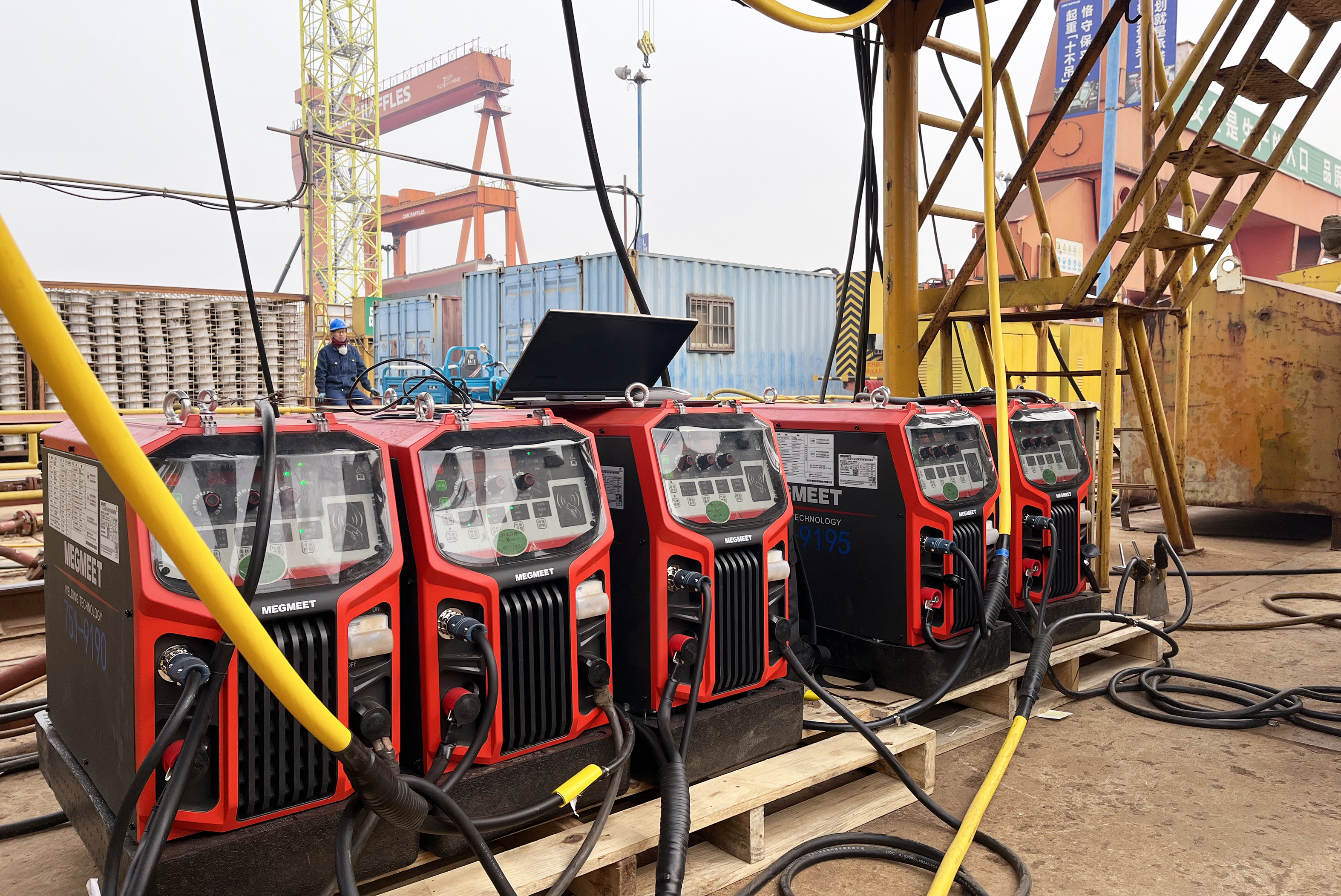Welding technology has come a long way, evolving from traditional methods to more advanced and efficient techniques. One of the key factors in modern welding is the type of welding machine used. Two popular choices are the three-phase welding machine and the single-phase inverter welding machine. These machines differ in terms of their power sources, efficiency, and applications. In this article, we will explore the definition and the differences between these two welding machines and their respective advantages.
I. What’s 3 Phase Welding Machine?
A three-phase welding machine is a type of welding equipment that utilizes a three-phase electrical power supply to generate the necessary welding current and voltage for various welding processes. Three-phase power consists of three alternating current (AC) waveforms, each offset by 120 degrees, which provides a continuous and balanced power output. Three-phase welding machines are known for their high power output, stability, and efficiency, making them well-suited for heavy-duty welding applications in industries such as construction, shipbuilding, and large-scale fabrication. They offer superior heat control, consistent arc stability, and the ability to handle prolonged welding operations without overheating. Due to their robust design, they are typically found in industrial workshops where their power and reliability are essential.

To Know How Much Power is Consumed by a 3-Phase Welding Machine?
II. What’s a Single Phase Welding Machine?
A single-phase inverter welding machine is a welding device that uses a single-phase electrical power supply and employs inverter technology to convert this input power into a controlled output for welding purposes. Inverter technology involves the use of electronic components to convert the incoming AC power into a high-frequency AC signal, which is then rectified back into DC power. This allows for better control over the welding arc and output characteristics. Single-phase inverter welding machines are valued for their compact size, portability, and energy efficiency. They are suitable for a wide range of welding tasks, including light to medium-duty applications in automotive repair, home workshops, and DIY projects. These machines are capable of producing high-quality welds with improved arc stability and are favored for their versatility and ease of use.
III. 3 Phase Vs. Single Phase Welding Machine.
1. Power Source:
The most fundamental distinction between the two welding machines is their power source. A three-phase welding machine is designed to be connected to a three-phase power supply, which is commonly available in industrial settings. On the other hand, a single-phase inverter welding machine operates on a single-phase power supply, which is the standard household electrical supply.
2. Efficiency:
Efficiency is a crucial factor in welding operations. Three-phase welding machines are known for their higher efficiency due to the nature of the three-phase power supply. They provide a more stable arc, better heat control, and consistent welding results. Additionally, three-phase machines can handle larger workloads and can sustain prolonged periods of operation without overheating. This makes them suitable for heavy-duty industrial applications.
Single-phase inverter welding machines, while generally less efficient than their three-phase counterparts, have made significant strides in recent years. Inverter technology allows for better control over the welding arc, resulting in improved welding quality. However, these machines are better suited for light to medium-duty tasks due to their limitations in handling high currents for extended periods.
3. Portability:
Single-phase inverter welding machines have the upper hand when it comes to portability. They are typically smaller, lighter, and more compact than three-phase welding machines. This makes them a great choice for jobs that require mobility and flexibility, such as field repairs and construction sites. Three-phase welding machines, due to their larger size and power requirements, are more suitable for stationary setups in well-equipped workshops.
4. Applications:
The choice between a three-phase welding machine and a single-phase inverter welding machine largely depends on the intended applications. Three-phase welding machines excel in heavy industrial settings, where they can handle demanding welding tasks such as thick metal fabrication, shipbuilding, and structural welding. Their high power output and stability make them indispensable for such applications.

Single-phase inverter welding machines are better suited for small to medium-scale projects, DIY enthusiasts, and hobbyists. They are versatile and capable of handling a variety of materials, including stainless steel, aluminum, and mild steel. These machines are commonly used in automotive repair shops, home workshops, and small fabrication businesses.
In the debate between three-phase welding machines and single-phase inverter welding machines, there is no clear winner. The choice depends on factors such as the scale of the welding project, the availability of power sources, and the desired level of portability. Three-phase machines offer higher efficiency and power for heavy-duty tasks, while single-phase inverters provide versatility and mobility for smaller projects. Ultimately, selecting the right welding machine requires careful consideration of these factors and a thorough assessment of the specific welding needs.
Megmeet has focused on the R&D and manufacturing of three-phase welding machines for decades, and it has outstanding peers with superior efficiency and high performance. Choosing Megmeet's three-phase welding machine means embracing innovation, reliability, and excellence. Our machines are meticulously crafted to surpass industry standards, ensuring that each weld is a testament to precision and durability. With a track record of customer satisfaction, we are dedicated to helping you achieve welding success with the utmost confidence.

Related articles:
1. How Much Power is Consumed by a 3-Phase Welding Machine?
2. Inverter Welder Problems and How to Solve Them?
3. What is an Inverter Welder & How it Works (Top 6 Inverter Welders)
4. Inverter vs Transformer Welders: Which One Reigns Supreme in Welding?
5. Top Inverter Welding Machine Brands in the World & How to Choose






